Tao Yan
Knowledge Editing for Large Language Model with Knowledge Neuronal Ensemble
Dec 30, 2024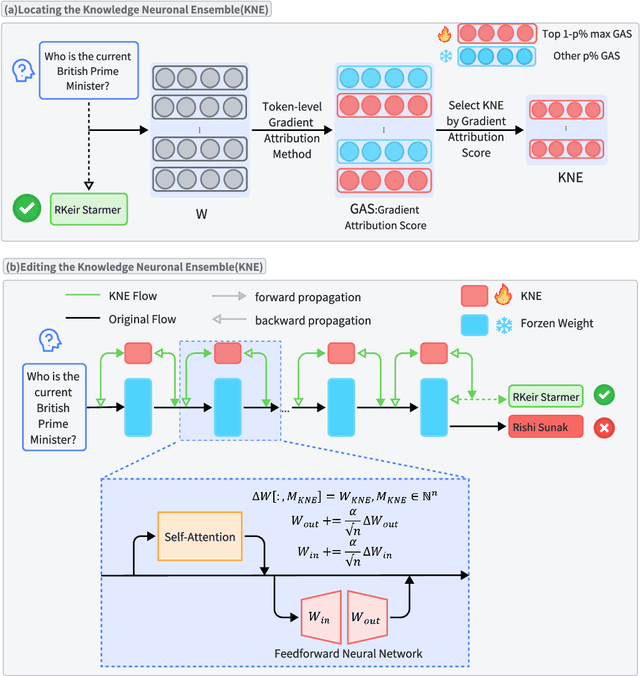
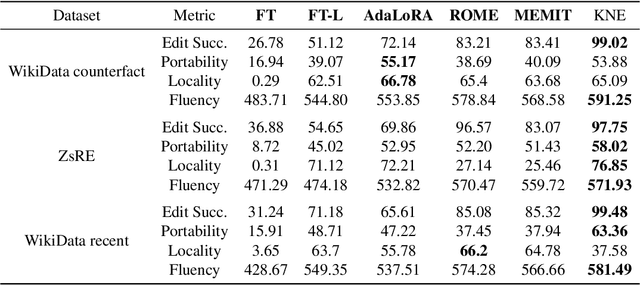

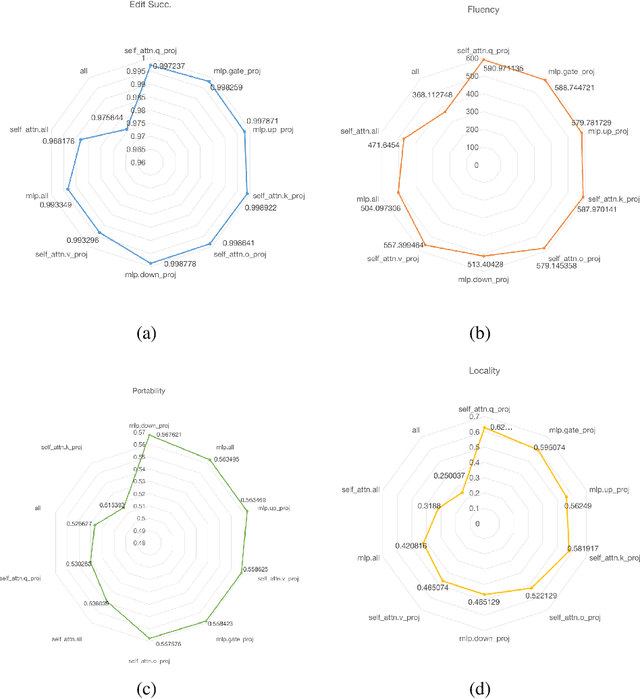
Abstract:As real-world knowledge is constantly evolving, ensuring the timeliness and accuracy of a model's knowledge is crucial. This has made knowledge editing in large language models increasingly important. However, existing knowledge editing methods face several challenges, including parameter localization coupling, imprecise localization, and a lack of dynamic interaction across layers. In this paper, we propose a novel knowledge editing method called Knowledge Neuronal Ensemble (KNE). A knowledge neuronal ensemble represents a group of neurons encoding specific knowledge, thus mitigating the issue of frequent parameter modification caused by coupling in parameter localization. The KNE method enhances the precision and accuracy of parameter localization by computing gradient attribution scores for each parameter at each layer. During the editing process, only the gradients and losses associated with the knowledge neuronal ensemble are computed, with error backpropagation performed accordingly, ensuring dynamic interaction and collaborative updates among parameters. Experimental results on three widely used knowledge editing datasets show that the KNE method significantly improves the accuracy of knowledge editing and achieves, or even exceeds, the performance of the best baseline methods in portability and locality metrics.
k-HyperEdge Medoids for Clustering Ensemble
Dec 11, 2024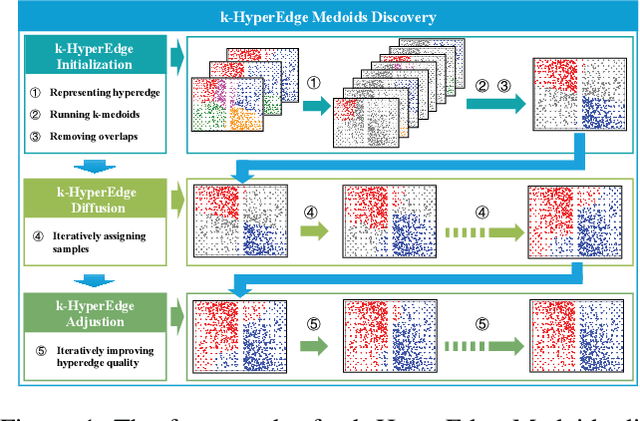
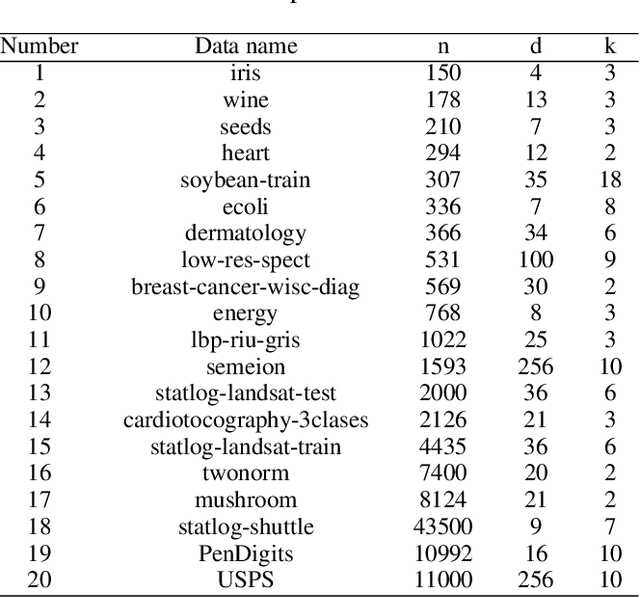
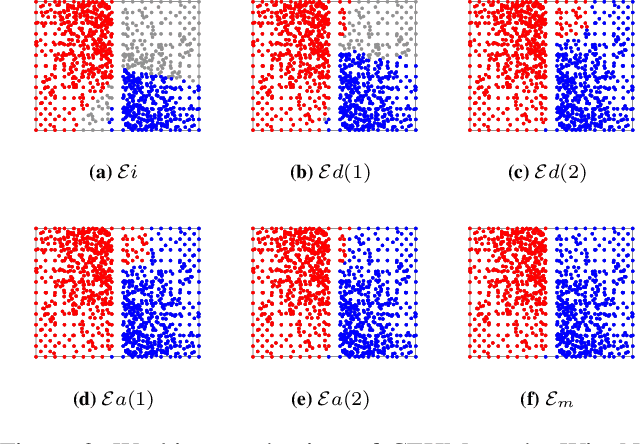
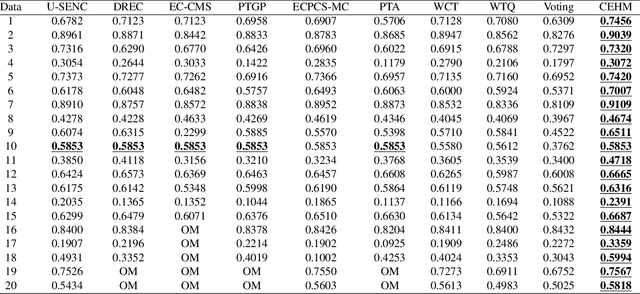
Abstract:Clustering ensemble has been a popular research topic in data science due to its ability to improve the robustness of the single clustering method. Many clustering ensemble methods have been proposed, most of which can be categorized into clustering-view and sample-view methods. The clustering-view method is generally efficient, but it could be affected by the unreliability that existed in base clustering results. The sample-view method shows good performance, while the construction of the pairwise sample relation is time-consuming. In this paper, the clustering ensemble is formulated as a k-HyperEdge Medoids discovery problem and a clustering ensemble method based on k-HyperEdge Medoids that considers the characteristics of the above two types of clustering ensemble methods is proposed. In the method, a set of hyperedges is selected from the clustering view efficiently, then the hyperedges are diffused and adjusted from the sample view guided by a hyperedge loss function to construct an effective k-HyperEdge Medoid set. The loss function is mainly reduced by assigning samples to the hyperedge with the highest degree of belonging. Theoretical analyses show that the solution can approximate the optimal, the assignment method can gradually reduce the loss function, and the estimation of the belonging degree is statistically reasonable. Experiments on artificial data show the working mechanism of the proposed method. The convergence of the method is verified by experimental analysis of twenty data sets. The effectiveness and efficiency of the proposed method are also verified on these data, with nine representative clustering ensemble algorithms as reference.
MDeRainNet: An Efficient Neural Network for Rain Streak Removal from Macro-pixel Images
Jun 15, 2024



Abstract:Since rainy weather always degrades image quality and poses significant challenges to most computer vision-based intelligent systems, image de-raining has been a hot research topic. Fortunately, in a rainy light field (LF) image, background obscured by rain streaks in one sub-view may be visible in the other sub-views, and implicit depth information and recorded 4D structural information may benefit rain streak detection and removal. However, existing LF image rain removal methods either do not fully exploit the global correlations of 4D LF data or only utilize partial sub-views, resulting in sub-optimal rain removal performance and no-equally good quality for all de-rained sub-views. In this paper, we propose an efficient network, called MDeRainNet, for rain streak removal from LF images. The proposed network adopts a multi-scale encoder-decoder architecture, which directly works on Macro-pixel images (MPIs) to improve the rain removal performance. To fully model the global correlation between the spatial and the angular information, we propose an Extended Spatial-Angular Interaction (ESAI) module to merge them, in which a simple and effective Transformer-based Spatial-Angular Interaction Attention (SAIA) block is also proposed for modeling long-range geometric correlations and making full use of the angular information. Furthermore, to improve the generalization performance of our network on real-world rainy scenes, we propose a novel semi-supervised learning framework for our MDeRainNet, which utilizes multi-level KL loss to bridge the domain gap between features of synthetic and real-world rain streaks and introduces colored-residue image guided contrastive regularization to reconstruct rain-free images. Extensive experiments conducted on synthetic and real-world LFIs demonstrate that our method outperforms the state-of-the-art methods both quantitatively and qualitatively.
Unified End-to-End V2X Cooperative Autonomous Driving
May 07, 2024

Abstract:V2X cooperation, through the integration of sensor data from both vehicles and infrastructure, is considered a pivotal approach to advancing autonomous driving technology. Current research primarily focuses on enhancing perception accuracy, often overlooking the systematic improvement of accident prediction accuracy through end-to-end learning, leading to insufficient attention to the safety issues of autonomous driving. To address this challenge, this paper introduces the UniE2EV2X framework, a V2X-integrated end-to-end autonomous driving system that consolidates key driving modules within a unified network. The framework employs a deformable attention-based data fusion strategy, effectively facilitating cooperation between vehicles and infrastructure. The main advantages include: 1) significantly enhancing agents' perception and motion prediction capabilities, thereby improving the accuracy of accident predictions; 2) ensuring high reliability in the data fusion process; 3) superior end-to-end perception compared to modular approaches. Furthermore, We implement the UniE2EV2X framework on the challenging DeepAccident, a simulation dataset designed for V2X cooperative driving.
Distributed Robust Learning based Formation Control of Mobile Robots based on Bioinspired Neural Dynamics
Mar 23, 2024



Abstract:This paper addresses the challenges of distributed formation control in multiple mobile robots, introducing a novel approach that enhances real-world practicability. We first introduce a distributed estimator using a variable structure and cascaded design technique, eliminating the need for derivative information to improve the real time performance. Then, a kinematic tracking control method is developed utilizing a bioinspired neural dynamic-based approach aimed at providing smooth control inputs and effectively resolving the speed jump issue. Furthermore, to address the challenges for robots operating with completely unknown dynamics and disturbances, a learning-based robust dynamic controller is developed. This controller provides real time parameter estimates while maintaining its robustness against disturbances. The overall stability of the proposed method is proved with rigorous mathematical analysis. At last, multiple comprehensive simulation studies have shown the advantages and effectiveness of the proposed method.
Region Feature Descriptor Adapted to High Affine Transformations
Feb 25, 2024Abstract:To address the issue of feature descriptors being ineffective in representing grayscale feature information when images undergo high affine transformations, leading to a rapid decline in feature matching accuracy, this paper proposes a region feature descriptor based on simulating affine transformations using classification. The proposed method initially categorizes images with different affine degrees to simulate affine transformations and generate a new set of images. Subsequently, it calculates neighborhood information for feature points on this new image set. Finally, the descriptor is generated by combining the grayscale histogram of the maximum stable extremal region to which the feature point belongs and the normalized position relative to the grayscale centroid of the feature point's region. Experimental results, comparing feature matching metrics under affine transformation scenarios, demonstrate that the proposed descriptor exhibits higher precision and robustness compared to existing classical descriptors. Additionally, it shows robustness when integrated with other descriptors.
An Image Enhancement Method for Improving Small Intestinal Villi Clarity
Feb 25, 2024



Abstract:This paper presents, for the first time, an image enhancement methodology designed to enhance the clarity of small intestinal villi in Wireless Capsule Endoscopy (WCE) images. This method first separates the low-frequency and high-frequency components of small intestinal villi images using guided filtering. Subsequently, an adaptive light gain factor is generated based on the low-frequency component, and an adaptive gradient gain factor is derived from the convolution results of the Laplacian operator in different regions of small intestinal villi images. The obtained light gain factor and gradient gain factor are then combined to enhance the high-frequency components. Finally, the enhanced high-frequency component is fused with the original image to achieve adaptive sharpening of the edges of WCE small intestinal villi images. The experiments affirm that, compared to established WCE image enhancement methods, our approach not only accentuates the edge details of WCE small intestine villi images but also skillfully suppresses noise amplification, thereby preventing the occurrence of edge overshooting.
A Feature Matching Method Based on Multi-Level Refinement Strategy
Feb 25, 2024



Abstract:Feature matching is a fundamental and crucial process in visual SLAM, and precision has always been a challenging issue in feature matching. In this paper, based on a multi-level fine matching strategy, we propose a new feature matching method called KTGP-ORB. This method utilizes the similarity of local appearance in the Hamming space generated by feature descriptors to establish initial correspondences. It combines the constraint of local image motion smoothness, uses the GMS algorithm to enhance the accuracy of initial matches, and finally employs the PROSAC algorithm to optimize matches, achieving precise matching based on global grayscale information in Euclidean space. Experimental results demonstrate that the KTGP-ORB method reduces the error by an average of 29.92% compared to the ORB algorithm in complex scenes with illumination variations and blur.
An Error-Matching Exclusion Method for Accelerating Visual SLAM
Feb 25, 2024



Abstract:In Visual SLAM, achieving accurate feature matching consumes a significant amount of time, severely impacting the real-time performance of the system. This paper proposes an accelerated method for Visual SLAM by integrating GMS (Grid-based Motion Statistics) with RANSAC (Random Sample Consensus) for the removal of mismatched features. The approach first utilizes the GMS algorithm to estimate the quantity of matched pairs within the neighborhood and ranks the matches based on their confidence. Subsequently, the Random Sample Consensus (RANSAC) algorithm is employed to further eliminate mismatched features. To address the time-consuming issue of randomly selecting all matched pairs, this method transforms it into the problem of prioritizing sample selection from high-confidence matches. This enables the iterative solution of the optimal model. Experimental results demonstrate that the proposed method achieves a comparable accuracy to the original GMS-RANSAC while reducing the average runtime by 24.13% on the KITTI, TUM desk, and TUM doll datasets.
A Robust Error-Resistant View Selection Method for 3D Reconstruction
Feb 25, 2024



Abstract:To address the issue of increased triangulation uncertainty caused by selecting views with small camera baselines in Structure from Motion (SFM) view selection, this paper proposes a robust error-resistant view selection method. The method utilizes a triangulation-based computation to obtain an error-resistant model, which is then used to construct an error-resistant matrix. The sorting results of each row in the error-resistant matrix determine the candidate view set for each view. By traversing the candidate view sets of all views and completing the missing views based on the error-resistant matrix, the integrity of 3D reconstruction is ensured. Experimental comparisons between this method and the exhaustive method with the highest accuracy in the COLMAP program are conducted in terms of average reprojection error and absolute trajectory error in the reconstruction results. The proposed method demonstrates an average reduction of 29.40% in reprojection error accuracy and 5.07% in absolute trajectory error on the TUM dataset and DTU dataset.
 Add to Chrome
Add to Chrome Add to Firefox
Add to Firefox Add to Edge
Add to Edge